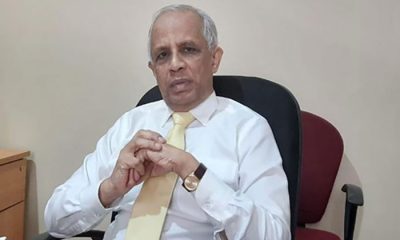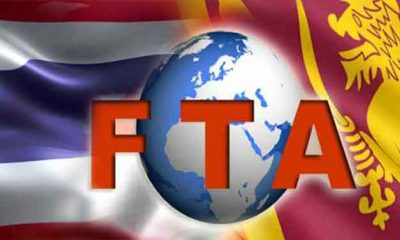Opinion
Five Years on with garbage, myths and lies
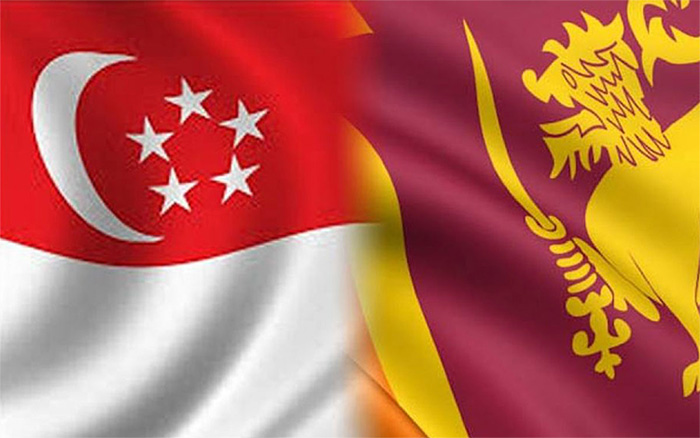
Sri Lanka – Singapore Free Trade Agreement
By Gomi Senadhira
This month the highly controversial Sri Lanka – Singapore Free Trade Agreement (SLSFTA), which was signed in January 2018 and enforced in May 2018, completes five years in operation. Given the high level of concern among domestic stakeholders regarding the agreement. President Maithripala Sirisena appointed an independent committee of experts, in August 2018, to study the agreement and the committee handed over its report to the President in December 2018. The committee had identified a number of pitfalls in the agreement and President Maithripala Sirisena had directed that the agreement be amended as per the recommendations of the expert group. In May 2021, it was revealed that the National Negotiation Committee had reviewed the SLSFTA and identified 18 amendments to be made to the agreement. Hence, as the SLSFTA marks five years of implementation, it is appropriate for relevant government agencies to provide an overview of the significant trade and economic effects of the FTA during the period, and any efforts undertaken by the government to revise the articles in the agreement which are unfavourable to Sri Lanka. This is particularly important in trade policy because Sri Lanka is currently engaged in FTA negotiations with a number of other countries, including China, India, and Thailand. A careful analysis of the SLSFTA, at this stage, would help to avoid repeating similar mistakes in these negotiations as well. Furthermore, the way our trade negotiators and “experts” reacted to some of these public concerns on the agreement also reveals the limits of their expertise on trade agreements and negotiations, and their understanding of the commitments they had extended to Singapore! Some of their comments are so absurd that it appears that they do not even comprehend the very basics of trade negotiations!
One of the most controversial issues in the SLSFTA was the commitments undertaken by Sri Lanka to open up import and process waste/garbage from Singapore. I was the first to raise this issue in August 2018 (SL chosen as garbage dump by Singapore after China, etc. shut their doors, The Island 18th August 2018). Last year, in a study undertaken by Anushka Wijesinha, who was an advisor to the Ministry of Development Strategies and International Trade, and Janaka Wijayasiri state, “At times, the concern morphed into undue fears and propelled misleading views and myths…Another concern that arose quite surprisingly was that the SLFTA – and the tariff liberalisation offered – would permit harmful products such as garbage, clinical waste, nuclear waste, chemical waste etc. to be imported to Sri Lanka. The argument by those individuals and groups that raised this issue was that since waste products are included in the TLP, such items can be dumped into the country under the agreement… To be clear, the reduction or elimination of tariffs does not grant automatic entry of a product into a country – all applicable domestic regulations and mechanisms would still apply, including any applicable import licensing requirements, standards, and other regulatory approvals. The SLSFTA does not take away Sri Lanka’s rights under International Environmental Protection Treaties to which Sri Lanka is a signatory and therefore, relevant environmental laws and regulations would apply to such imported products with no exception for those imports from Singapore under the SLSFTA.” (Sri Lanka – Singapore FTA Four Years On: Policy Context, Key Issues, and Future Prospects – August 2022)
When I exposed the commitments undertaken in the agreement to allow waste, particularly plastic waste, imports from Singapore it was not done based simply on tariff liberalisation. It was done after analysing the global trade of plastic waste, the challenges Singapore was facing in exporting plastic waste, Sri Lanka’s import of plastic waste, and Sri Lanka’s commitments in the agreement under the TLP, rules of origin, and services.
The Global situation
The developed countries lawfully or unlawfully export garbage as “recyclable waste” overseas for recycling. That is because recycling is a labour-intensive and dirty industry. For example, a PET bottle would have to be washed, its cap, and the label taken off before it can be recycled. So, it is a labour- intensive process. Very often large quantities of toxic or hazardous wastes also are mixed with “clean” waste. Then it also becomes a hazardous industry. During the cleaning process toxic waste is released into local environs and workers get exposed to them. So, developed countries prefer to do this “recycling” in developing countries. To do their dirty work these global garbage traders particularly target developing countries with corrupt officials and shady businessmen where import licensing requirements, standards, and other regulatory approvals can be bent and corrupt officials would facilitate the clearing of even toxic garbage containers without any examination. In these countries, the bulk of the imported garbage ends up in the local garbage dumps.
China was the world’s largest importer of garbage and imported almost 60% of the world’s plastic waste. However, there was a growing public outcry, over many years, against the import of “foreign garbage.” in general and import of plastic waste in particular. This intensified after the release of the documentary film “Plastic China” in 2016 depicting the lives of two families who make their living recycling plastic waste imported from developed countries. In 2017 China decided to ban imports of 24 types of rubbish and notified the WTO accordingly. “We found that large amounts of dirty wastes or even hazardous wastes are mixed in the solid waste that can be used as raw materials. This seriously polluted China’s environment. To protect China’s environmental interests and people’s health, we urgently adjust the imported solid wastes list, and forbid the import of solid wastes that are highly polluted. Protection of human health or safety; Protection of animal or plant life or health; Protection of the environment,” stated China’s WTO notification.
Normally, in international trade when the import of a product is banned in one country, it will be redirected to other countries. After the Chinese ban. Increased volumes of plastic waste started to move into other traditional importers of waste for reprocessing (Thailand, Vietnam, and other countries in the region) and these countries too started to restrict the imports of waste products. So, where will the world’s waste exports end up, if not in China or South East Asia? By late 2016, the Chinese plastic waste processing industry was looking for places in South Asia and Africa to relocate this billion-dollar industry.
 Situation in Singapore
Situation in Singapore
Singapore is one of the world’s largest, per capita, plastic waste generators. From 2012 to 2017 the total volume of plastic waste generated in Singapore averaged around 800 thousand tons per year. In 2013 Singapore exported over 90,000 tons of plastic waste. Out of it over 57,000 Tons went to China. After China’s ban on the import of plastic waste, Singapore’s exports fell to around 30, 000 tons by 2021. In Singapore, plastic waste is either exported or incinerated. Ash from incineration is shipped to a man-made island and that landfill is also fast filling up. Furthermore, the incineration of plastic waste even under controlled conditions leads to environmental degradation. Singapore is very keen on maintaining its air quality and incineration is not a preferred option. But recycling in Singapore is expensive. So, recycling companies in Singapore used to undertake that in Malaysia, China, or other countries in the region. After the Chinese ban exports to China have stopped totally and other importers also were contemplating import restrictions. Hence, it was no secret, when the SLSFTA was negotiated Singapore was exploring new overseas locations to establish recycling operations, or dumping grounds. In 2021 Singapore generated 982 thousand tons of plastic waste and only around six percent of the plastic waste generated was recycled. (See Table I)
The situation in Sri Lanka
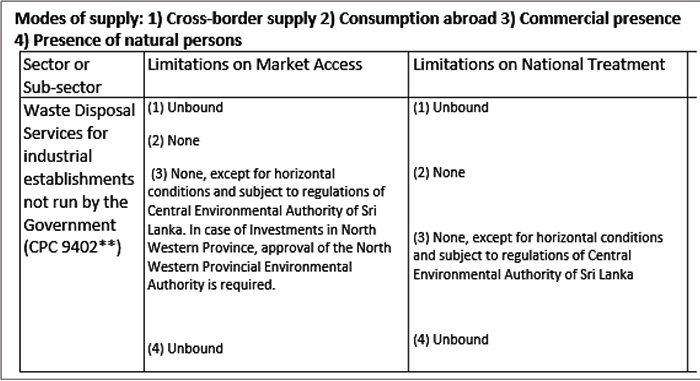 When the SLSFTA was under negotiation Sri Lanka had already commenced importing plastic waste. The surge in imports between 2013 and 2017 shown in the Table II, clearly indicated the presence of a small but growing plastic waste “recycling” industry in Sri Lanka. My comments in 2018 was partly based on this analysis. (See Table II)
When the SLSFTA was under negotiation Sri Lanka had already commenced importing plastic waste. The surge in imports between 2013 and 2017 shown in the Table II, clearly indicated the presence of a small but growing plastic waste “recycling” industry in Sri Lanka. My comments in 2018 was partly based on this analysis. (See Table II)
Though trade flows indicated a possible presence of global waste “recycling” mafia in Sri Lanka, I didn’t know, at that stage, garbage “recycling” or “resource recovery industries” had already commenced thriving operations within the BOI, under the Commercial Hub Regulation Act.
That was revealed only after the media exposure in 2019, of a huge waste dump inside the BOI. At that time, a representative from the “resource recovery industry” operated in the Katunayake FTZ, brazenly claimed at a press conference that this was the world’s “fastest-growing and most admired industry”. However, the investigation revealed that this clandestine waste dump inside the BOI contained toxic waste. Then came the discovery of over 200 stinking garbage containers in the Colombo port! Again, with toxic waste! These were discovered only because dirty fluids started to ooze out these smelly containers. It was reported that the environmental and customs officials even refused to open these containers as it was unsafe to do so. It was also reported that the garbage consignments moved from the port to the BOI were not physically checked by the Customs and other regulatory agencies, and these agencies did not conduct any entry processing or check on documents, due to BOI regulations! Though the Finance Minister promised the Parliament, in July 2019, that he would conduct a comprehensive investigation into the matter and would take legal action against the culprits nothing much had happened even after four years. It is also noteworthy that these garbage containers were discovered only after the collapse of Meethotamulla Garbage Dump in 2017. If Meethotamulla had not imploded, at least some of the waste may have ended up there.
Sri Lanka – Singapore FTA
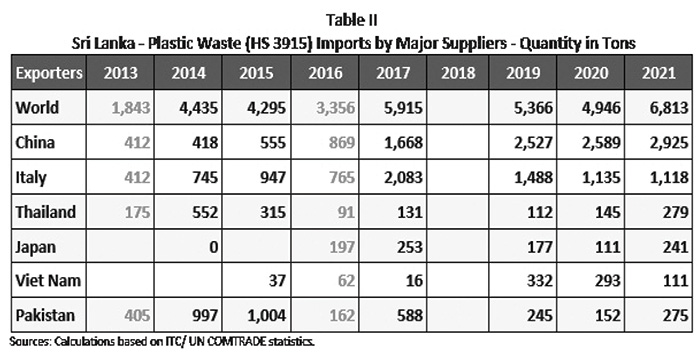 The SLSFTA was negotiated at a time when the global crisis in the garbage trade was at its peak. So, how did Sri Lankan negotiators react to the crisis? Did they see it as a threat or an opportunity? Trade negotiators are expected to analyse trade statistics before making any commitment on any tariff line. Didn’t they know that Sri Lanka was already importing plastic waste? The representatives from the BOI were involved in the negotiations. Didn’t they know Sri Lanka had established these “resource recovery industries” within the BOI? How Singaporean negotiators approached this issue. Did they request any commitments from Sri Lanka in the area of import and processing of waste? Did we provide these commitments without any requests? And finally, didn’t they even know that Sri Lanka made these commitments?
The SLSFTA was negotiated at a time when the global crisis in the garbage trade was at its peak. So, how did Sri Lankan negotiators react to the crisis? Did they see it as a threat or an opportunity? Trade negotiators are expected to analyse trade statistics before making any commitment on any tariff line. Didn’t they know that Sri Lanka was already importing plastic waste? The representatives from the BOI were involved in the negotiations. Didn’t they know Sri Lanka had established these “resource recovery industries” within the BOI? How Singaporean negotiators approached this issue. Did they request any commitments from Sri Lanka in the area of import and processing of waste? Did we provide these commitments without any requests? And finally, didn’t they even know that Sri Lanka made these commitments?
When I warned that plastic and asbestos waste will be imported for processing and recycling, the Ministry of Development Strategies and International Trade responded by stating “… in order for products manufactured in Singapore using non-originating raw materials (imported raw materials) to become eligible for Customs duty concessions under SLSFTA, origin criteria listed below should be complied with: I. Sufficient working or processing + comply with value addition of 35% of FOB or II. Sufficient working or processing + comply with CTH (change of tariff no at 4- digit level between the finished product and imported inputs) or… Sufficient working or processing + comply with Product Specific Rules”),” (“Garbage in, Garbage out’- Malik’s response,” The Island, October 9, 2018).
Unfortunately, our trade negotiators and advisers are not even aware that under the SLSFTA Rules of Origin, waste and scrap for recycling qualify as wholly obtained products, like plants … grown and harvested, or live animals born, raised and slaughtered in Singapore. The relevant sections are Article 4 k, l, and m, which state” … (k) used articles collected there fit only for the recovery of raw materials; (l) wastes and scrap resulting from manufacturing operations conducted there; (m) waste and scrap derived from used goods collected in the exporting Party, provided that those goods are fit only for the recovery of raw materials.“ Under these sub- articles plastic waste, asbestos waste and similar products, can be imported for the recovery of raw materials by the “resource recovery industry” which had a highly lucrative operation in the BOI zones when the agreement was signed.
The agreement clearly categorises waste collected in Singapore as a wholly obtained product under Article 4, the Ministry of DS& IT claimed waste cannot be imported under Article 5. Didn’t our International Trade Ministry and other trade “experts” understand waste collected in Singapore is covered under Article 4 and hence the limitations in Article 5 do not apply? Or was it a deliberate attempt to hoodwink the public?
Then there are a few specific rules of origin that would facilitate the dumping of dangerous products in Sri Lanka. For example, crocidolite asbestos (HS 6812) also known as blue asbestos, is considered the most hazardous type of asbestos. Sri Lanka prohibited the use of crocidolite asbestos in 1987. Singapore banned the use of all types of Asbestos in 1989. However, a significant amount of the material remains in the buildings and elsewhere in Singapore and there are strict laws governing the demolishing and removal of these materials. Shockingly this item is not only included in Sri Lanka’s TLP but our negotiators have spent time and money on formulating very simple specific rules of origin to facilitate its imports. If a product containing Crocidolite, simply changes its tariff subheading then it qualifies as a product of Singaporean origin.
Then in the Services Chapter Sri Lanka has undertaken a specific commitment on Waste Disposal Services which is reproduced below (see Table 3):
The CPC 9402 refers to “refuse collection and disposal services’ and it includes collection services of garbage, trash, rubbish and waste, whether from households or from industrial and commercial establishments, transport services and disposal services by incineration or by other means. The use of “**” against the CPC code indicates that the specific commitment for that code shall not extend to the total range of services covered under that code. Sri Lanka’s commitment clearly limits its scope to waste collected from industrial establishments not run by the Government, but no other areas are excluded.
Under these commitments, services can be provided through four modes of supply. For “Waste Disposal Services” Sri Lanka has opened up only two modes of supply, namely, Mode 2) Consumption abroad and Mode 3) Commercial presence. The term “None” under this commitment means that the country is committing itself to provide full liberalization without any limitations on market access or national treatment for the service sector and modes of supply for which commitments are written.
By opening up Mode 2 without any restrictions, Sri Lanka permits the other party to the agreement to process its solid waste in Sri Lanka. If the intention of Sri Lankan negotiators, as the government claims, was to limit this to waste collected in Sri Lanka, then mode 2 should have been left unbound. By opening up of Mode 3 Sri Lanka has allowed Singaporean Waste Disposal Services to establish a subsidiary in Sri Lanka, subject to regulations of the Central Environmental Authority of Sri Lanka. Therefore, under this commitment waste can be imported from Singapore not only to recover raw materials but also to dispose of.
Before the SLSFTA entered into force in May 2018, if a Singaporean, Chinese or any other national wanted to recycle imported waste in Sri Lanka, it was possible to do so under BOI regulations. After May 2018, any Singaporean company can establish refuse disposal services in Sri Lanka, under the commitments undertaken by Sri Lanka in the services chapter of the SLSFTA, to recycle and/or process waste!
After I raised this issue it was widely discussed. I believe the Presidential Commission also recommended that the articles which permit waste import and recycling should be amended. My article “SL chosen as garbage dump by Singapore after China etc. shut their doors,” published in the Island in 2018, was tabled in the parliament by Shehan Semasinghe. Later, in April 2022, he became the Minister of Trade and since September 2022 he is the Minister of State for Finance. In spite of all that the government had not taken any action to protect Sri Lanka from becoming a garbage dump for developed countries other than calling my claim, “… a despicable attempt … to deceive the public” and in turn releasing few press releases with incorrect information to mislead the public. Even when the government imposed a ban on imports of hundreds of products, waste items like plastic waste were not included in that list and every year Sri Lanka continues to import thousands of tons of plastic waste!
In 2019, the Philippines, in a major diplomatic row with Canada, reshipped 2,400 tonnes of Canadian toxic waste which was imported labelled as plastic waste for recycling. Other countries in the region also had taken similar action. But we in Sri Lanka are not like that. Last year alone Sri Lanka imported over 6000 tons of plastic waste! Most of it came from China, a country that banned the import of plastic waste to protect environmental interests and people’s health and safety.
(The writer can be contacted via senadhiragomi@gmail.com.)
Opinion
Child food poverty: A prowling menace
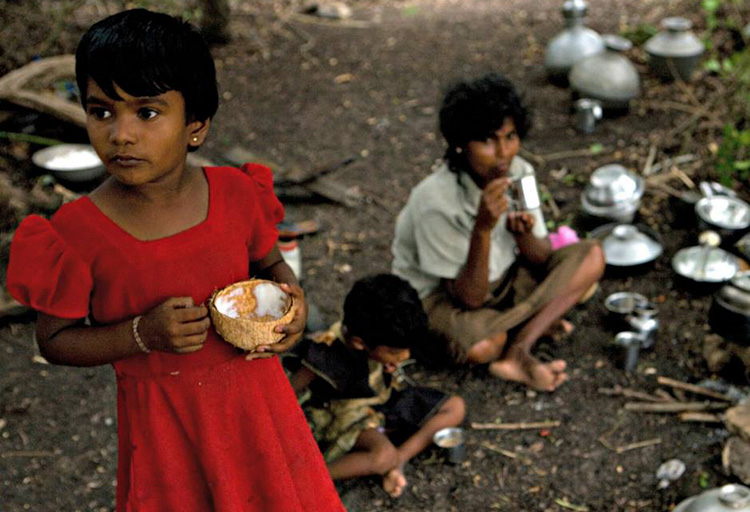
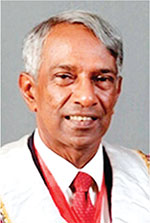 by Dr B.J.C.Perera
by Dr B.J.C.Perera
MBBS(Cey), DCH(Cey), DCH(Eng), MD(Paed), MRCP(UK), FRCP(Edin),
FRCP(Lon), FRCPCH(UK), FSLCPaed, FCCP, Hony FRCPCH(UK), Hony. FCGP(SL)
Specialist Consultant Paediatrician and Honorary Senior Fellow,
Postgraduate Institute of Medicine, University of Colombo, Sri Lanka.
Joint Editor, Sri Lanka Journal of Child Health
In an age of unprecedented global development, technological advancements, universal connectivity, and improvements in living standards in many areas of the world, it is a very dark irony that child food poverty remains a pressing issue. UNICEF defines child food poverty as children’s inability to access and consume a nutritious and diverse diet in early childhood. Despite the planet Earth’s undisputed capacity to produce enough food to nourish everyone, millions of children still go hungry each day. We desperately need to explore the multifaceted deleterious effects of child food poverty, on physical health, cognitive development, emotional well-being, and societal impacts and then try to formulate a road map to alleviate its deleterious effects.
Every day, right across the world, millions of parents and families are struggling to provide nutritious and diverse foods that young children desperately need to reach their full potential. Growing inequities, conflict, and climate crises, combined with rising food prices, the overabundance of unhealthy foods, harmful food marketing strategies and poor child-feeding practices, are condemning millions of children to child food poverty.
In a communique dated 06th June 2024, UNICEF reports that globally, 1 in 4 children; approximately 181 million under the age of five, live in severe child food poverty, defined as consuming at most, two of eight food groups in early childhood. These children are up to 50 per cent more likely to suffer from life-threatening malnutrition. Child Food Poverty: Nutrition Deprivation in Early Childhood – the third issue of UNICEF’s flagship Child Nutrition Report – highlights that millions of young children are unable to access and consume the nutritious and diverse diets that are essential for their growth and development in early childhood and beyond.
It is highlighted in the report that four out of five children experiencing severe child food poverty are fed only breastmilk or just some other milk and/or a starchy staple, such as maize, rice or wheat. Less than 10 per cent of these children are fed fruits and vegetables and less than 5 per cent are fed nutrient-dense foods such as eggs, fish, poultry, or meat. These are horrendous statistics that should pull at the heartstrings of the discerning populace of this world.
The report also identifies the drivers of child food poverty. Strikingly, though 46 per cent of all cases of severe child food poverty are among poor households where income poverty is likely to be a major driver, 54 per cent live in relatively wealthier households, among whom poor food environments and feeding practices are the main drivers of food poverty in early childhood.
One of the most immediate and visible effects of child food poverty is its detrimental impact on physical health. Malnutrition, which can result from both insufficient calorie intake and lack of essential nutrients, is a prevalent consequence. Chronic undernourishment during formative years leads to stunted growth, weakened immune systems, and increased susceptibility to infections and diseases. Children who do not receive adequate nutrition are more likely to suffer from conditions such as anaemia, rickets, and developmental delays.
Moreover, the lack of proper nutrition can have long-term health consequences. Malnourished children are at a higher risk of developing chronic illnesses such as heart disease, diabetes, and obesity later in life. The paradox of child food poverty is that it can lead to both undernutrition and overnutrition, with children in food-insecure households often consuming calorie-dense but nutrient-poor foods due to economic constraints. This dietary pattern increases the risk of obesity, creating a vicious cycle of poor health outcomes.
The impacts of child food poverty extend beyond physical health, severely affecting cognitive development and educational attainment. Adequate nutrition is crucial for brain development, particularly in the early years of life. Malnutrition can impair cognitive functions such as attention, memory, and problem-solving skills. Studies have consistently shown that malnourished children perform worse academically compared to their well-nourished peers. Inadequate nutrition during early childhood can lead to reduced school readiness and lower IQ scores. These children often struggle to concentrate in school, miss more days due to illness, and have lower overall academic performance. This educational disadvantage perpetuates the cycle of poverty, as lower educational attainment reduces future employment opportunities and earning potential.
The emotional and psychological effects of child food poverty are profound and are often overlooked. Food insecurity creates a constant state of stress and anxiety for both children and their families. The uncertainty of not knowing when or where the next meal will come from can lead to feelings of helplessness and despair. Children in food-insecure households are more likely to experience behavioural problems, including hyperactivity, aggression, and withdrawal. The stigma associated with poverty and hunger can further exacerbate these emotional challenges. Children who experience food poverty may feel shame and embarrassment, leading to social isolation and reduced self-esteem. This psychological toll can have lasting effects, contributing to mental health issues such as depression and anxiety in adolescence and adulthood.
Child food poverty also perpetuates cycles of poverty and inequality. Children who grow up in food-insecure households are more likely to remain in poverty as adults, continuing the intergenerational transmission of disadvantage. This cycle of poverty exacerbates social disparities, contributing to increased crime rates, reduced social cohesion, and greater reliance on social welfare programmes. The repercussions of child food poverty ripple through society, creating economic and social challenges that affect everyone. The healthcare costs associated with treating malnutrition-related illnesses and chronic diseases are substantial. Additionally, the educational deficits linked to child food poverty result in a less skilled workforce, which hampers economic growth and productivity.
Addressing child food poverty requires a multi-faceted approach that tackles both immediate needs and underlying causes. Policy interventions are crucial in ensuring that all children have access to adequate nutrition. This can include expanding social safety nets, such as food assistance programmes and school meal initiatives, as well as targeted manoeuvres to reach more vulnerable families. Ensuring that these programmes are adequately funded and effectively implemented is essential for their success.
In addition to direct food assistance, broader economic and social policies are needed to address the root causes of poverty. This includes efforts to increase household incomes through living wage policies, job training programs, and economic development initiatives. Supporting families with affordable childcare, healthcare, and housing can also alleviate some of the financial pressures that contribute to food insecurity.
Community-based initiatives play a vital role in combating child food poverty. Local food banks, community gardens, and nutrition education programmes can help provide immediate relief and promote long-term food security. Collaborative efforts between government, non-profits, and the private sector are necessary to create sustainable solutions.
Child food poverty is a profound and inescapable issue with far-reaching consequences. Its deleterious effects on physical health, cognitive development, emotional well-being, and societal stability underscore the urgent need for comprehensive action. As we strive for a more equitable and just world, addressing child food poverty must be a priority. By ensuring that all children have access to adequate nutrition, we can lay the foundation for a healthier, more prosperous future for individuals and society as a whole. The fight against child food poverty is not just a moral imperative but an investment in our collective future. Healthy, well-nourished children are more likely to grow into productive, contributing members of society. The benefits of addressing this issue extend beyond individual well-being, enhancing economic stability and social harmony. It is incumbent upon us all to recognize and act upon the understanding that every child deserves the right to adequate nutrition and the opportunity to thrive.
Despite all of these existent challenges, it is very definitely possible to end child food poverty. The world needs targeted interventions to transform food, health, and social protection systems, and also take steps to strengthen data systems to track progress in reducing child food poverty. All these manoeuvres must comprise a concerted effort towards making nutritious and diverse diets accessible and affordable to all. We need to call for child food poverty reduction to be recognized as a metric of success towards achieving global and national nutrition and development goals.
Material from UNICEF reports and AI assistance are acknowledged.
Opinion
Do opinion polls matter?
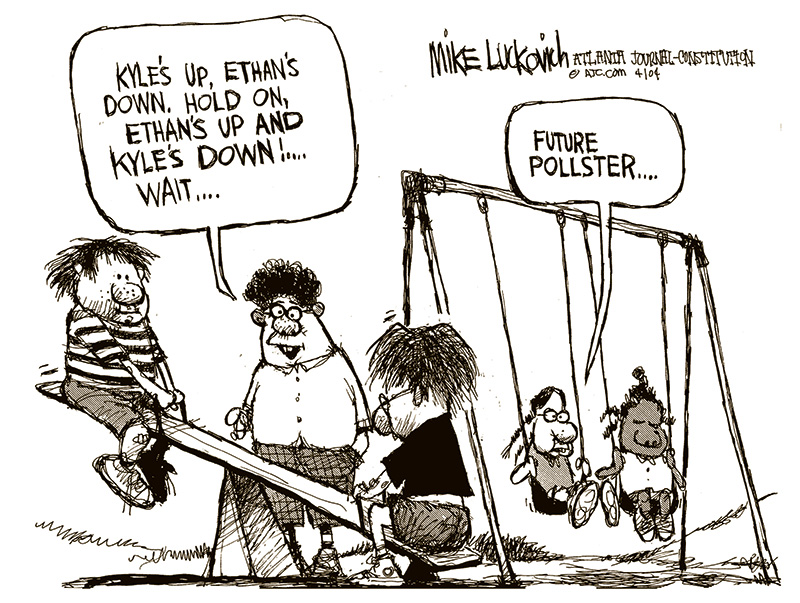
By Dr Upul Wijayawardhana
The colossal failure of not a single opinion poll predicting accurately the result of the Indian parliamentary election, the greatest exercise in democracy in the world, raises the question whether the importance of opinion polls is vastly exaggerated. During elections two types of opinion polls are conducted; one based on intentions to vote, published during or before the campaign, often being not very accurate as these are subject to many variables but exit polls, done after the voting where a sample tally of how the voters actually voted, are mostly accurate. However, of the 15 exit polls published soon after all the votes were cast in the massive Indian election, 13 vastly overpredicted the number of seats Modi’s BJP led coalition NDA would obtain, some giving a figure as high as 400, the number Modi claimed he is aiming for. The other two polls grossly underestimated predicting a hung parliament. The actual result is that NDA passed the threshold of 272 comfortably, there being no landslide. BJP by itself was not able to cross the threshold, a significant setback for an overconfident Mody! Whether this would result in less excesses on the part of Modi, like Muslim-bashing, remains to be seen. Anyway, the statement issued by BJP that they would be investigating the reasons for failure rather than blaming the process speaks very highly of the maturity of the democratic process in India.
I was intrigued by this failure of opinion polls as this differs dramatically from opinion polls in the UK. I never failed to watch ‘Election night specials’ on BBC; as the Big Ben strikes ‘ten’ (In the UK polls close at 10pm} the anchor comes out with “Exit polls predict that …” and the actual outcome is often almost as predicted. However, many a time opinion polls conducted during the campaign have got the predictions wrong. There are many explanations for this.
An opinion poll is defined as a research survey of public opinion from a particular sample, the origin of which can be traced back to the 1824 US presidential election, when two local newspapers in North Carolina and Delaware predicted the victory of Andrew Jackson but the sample was local. First national survey was done in 1916 by the magazine, Literary Digest, partly for circulation-raising, by mailing millions of postcards and counting the returns. Of course, this was not very scientific though it accurately predicted the election of Woodrow Wilson.
Since then, opinion polls have grown in extent and complexity with scientific methodology improving the outcome of predictions not only in elections but also in market research. As a result, some of these organisations have become big businesses. For instance, YouGov, an internet-based organisation co-founded by the Iraqi-born British politician Nadim Zahawi, based in London had a revenue of 258 million GBP in 2023.
In Sri Lanka, opinion polls seem to be conducted by only one organisation which, by itself, is a disadvantage, as pooled data from surveys conducted by many are more likely to reflect the true situation. Irrespective of the degree of accuracy, politicians seem to be dependent on the available data which lend explanations to the behaviour of some.
The Institute for Health Policy’s (IHP) Sri Lanka Opinion Tracker Survey has been tracking the voting intentions for the likely candidates for the Presidential election. At one stage the NPP/JVP leader AKD was getting a figure over 50%. This together with some degree of international acceptance made the JVP behave as if they are already in power, leading to some incidents where their true colour was showing.
The comments made by a prominent member of the JVP who claimed that the JVP killed only the riff-raff, raised many questions, in addition to being a total insult to many innocents killed by them including my uncle. Do they have the authority to do so? Do extra-judicial killings continue to be JVP policy? Do they consider anyone who disagrees with them riff-raff? Will they kill them simply because they do not comply like one of my admired teachers, Dr Gladys Jayawardena who was considered riff-raff because she, as the Chairman of the State Pharmaceutical Corporation, arranged to buy drugs cheaper from India? Is it not the height of hypocrisy that AKD is now boasting of his ties to India?
Another big-wig comes with the grand idea of devolving law and order to village level. As stated very strongly, in the editorial “Pledges and reality” (The Island, 20 May) is this what they intend to do: Have JVP kangaroo-courts!
Perhaps, as a result of these incidents AKD’s ratings has dropped to 39%, according to the IHP survey done in April, and Sajith Premadasa’s ratings have increased gradually to match that. Whilst they are level pegging Ranil is far behind at 13%. Is this the reason why Ranil is getting his acolytes to propagate the idea that the best for the country is to extend his tenure by a referendum? He forced the postponement of Local Governments elections by refusing to release funds but he cannot do so for the presidential election for constitutional reasons. He is now looking for loopholes. Has he considered the distinct possibility that the referendum to extend the life of the presidency and the parliament if lost, would double the expenditure?
Unfortunately, this has been an exercise in futility and it would not be surprising if the next survey shows Ranil’s chances dropping even further! Perhaps, the best option available to Ranil is to retire gracefully, taking credit for steadying the economy and saving the country from an anarchic invasion of the parliament, rather than to leave politics in disgrace by coming third in the presidential election. Unless, of course, he is convinced that opinion polls do not matter and what matters is the ballots in the box!
Opinion
Thoughtfulness or mindfulness?

By Prof. Kirthi Tennakone
ktenna@yahoo.co.uk
Thoughtfulness is the quality of being conscious of issues that arise and considering action while seeking explanations. It facilitates finding solutions to problems and judging experiences.
Almost all human accomplishments are consequences of thoughtfulness.
Can you perform day-to-day work efficiently and effectively without being thoughtful? Obviously, no. Are there any major advancements attained without thought and contemplation? Not a single example!
Science and technology, art, music and literary compositions and religion stand conspicuously as products of thought.
Thought could have sinister motives and the only way to eliminate them is through thought itself. Thought could distinguish right from wrong.
Empathy, love, amusement, and expression of sorrow are reflections of thought.
Thought relieves worries by understanding or taking decisive action.
Despite the universal virtue of thoughtfulness, some advocate an idea termed mindfulness, claiming the benefits of nurturing this quality to shape mental wellbeing. The concept is defined as focusing attention to the present moment without judgment. A way of forgetting the worries and calming the mind – a form of meditation. A definition coined in the West to decouple the concept from religion. The attitude could have a temporary advantage as a method of softening negative feelings such as sorrow and anger. However, no man or woman can afford to be non-judgmental all the time. It is incompatible with indispensable thoughtfulness! What is the advantage of diverting attention to one thing without discernment during a few tens of minute’s meditation? The instructors of mindfulness meditation tell you to focus attention on trivial things. Whereas in thoughtfulness, you concentrate the mind on challenging issues. Sometimes arriving at groundbreaking scientific discoveries, solution of mathematical problems or the creation of masterpieces in engineering, art, or literature.
The concept of meditation and mindfulness originated in ancient India around 1000 BCE. Vedic ascetics believed the practice would lead to supernatural powers enabling disclosure of the truth. Failing to meet the said aspiration, notwithstanding so many stories in scripture, is discernable. Otherwise, the world would have been awakened to advancement by ancient Indians before the Greeks. The latter culture emphasized thoughtfulness!
In India, Buddha was the first to deviate from the Vedic philosophy. His teachers, Alara Kalama and Uddaka Ramaputra, were adherents of meditation. Unconvinced of their approach, Buddha concluded a thoughtful analysis of the actualities of life should be the path to realisation. However, in an environment dominated by Vedic tradition, meditation residually persisted when Buddha’s teachings transformed into a religion.
In the early 1970s, a few in the West picked up meditation and mindfulness. We Easterners, who criticize Western ideas all the time, got exalted after seeing something Eastern accepted in the Western circles. Thereafter, Easterners took up the subject more seriously, in the spirit of its definition in the West.
Today, mindfulness has become a marketable commodity – a thriving business spreading worldwide, fueled largely by advertising. There are practice centres, lessons onsite and online, and apps for purchase. Articles written by gurus of the field appear on the web.
What attracts people to mindfulness programmes? Many assume them being stressed and depressed needs to improve their mental capacity. In most instances, these are minor complaints and for understandable reasons, they do not seek mainstream medical interventions but go for exaggeratedly advertised alternatives. Mainstream medical treatments are based on rigorous science and spell out both the pros and cons of the procedure, avoiding overstatement. Whereas the alternative sector makes unsubstantiated claims about the efficacy and effectiveness of the treatment.
Advocates of mindfulness claim the benefits of their prescriptions have been proven scientifically. There are reports (mostly in open-access journals which charge a fee for publication) indicating that authors have found positive aspects of mindfulness or identified reasons correlating the efficacy of such activities. However, they rarely meet standards normally required for unequivocal acceptance. The gold standard of scientific scrutiny is the statistically significant reproducibility of claims.
If a mindfulness guru claims his prescription of meditation cures hypertension, he must record the blood pressure of participants before and after completion of the activity and show the blood pressure of a large percentage has stably dropped and repeat the experiment with different clients. He must also conduct sessions where he adopts another prescription (a placebo) under the same conditions and compares the results. This is not enough, he must request someone else to conduct sessions following his prescription, to rule out the influence of the personality of the instructor.
The laity unaware of the above rigid requirements, accede to purported claims of mindfulness proponents.
A few years ago, an article published and widely cited stated that the practice of mindfulness increases the gray matter density of the brain. A more recent study found there is no such correlation. Popular expositions on the subject do not refer to the latter report. Most mindfulness research published seems to have been conducted intending to prove the benefits of the practice. The hard science demands doing the opposite as well-experiments carried out intending to disprove the claims. You need to be skeptical until things are firmly established.
Despite many efforts diverted to disprove Einstein’s General Theory of Relativity, no contradictions have been found in vain to date, strengthening the validity of the theory. Regarding mindfulness, as it stands, benefits can neither be proved nor disproved, to the gold standard of scientific scrutiny.
Some schools in foreign lands have accommodated mindfulness training programs hoping to develop the mental facility of students and Sri Lanka plans to follow. However, studies also reveal these exercises are ineffective or do more harm than good. Have we investigated this issue before imitation?
Should we force our children to focus attention on one single goal without judgment, even for a moment?
Why not allow young minds to roam wild in their deepest imagination and build castles in the air and encourage them to turn these fantasies into realities by nurturing their thoughtfulness?
Be more thoughtful than mindful?




